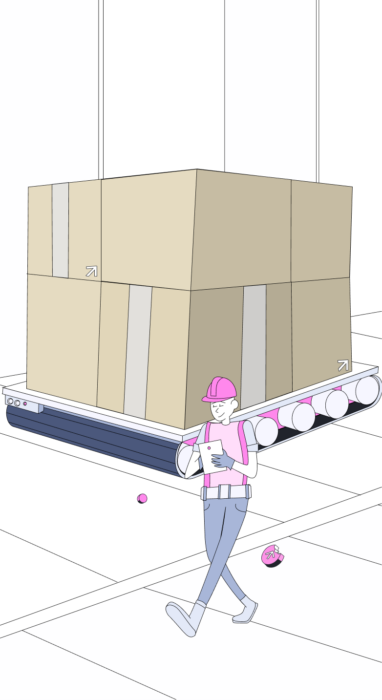Today’s Menu 🥠
- Pentagon To Spend $6B On AI Drones
- How AI Evolved From The 1960s
- Engineer Disturbed By AI Generations
- Text-To-Application AI Software
Fast Snacks 🥡
Spotify Now Has Music Videos
The beta feature is accessible from the Now Playing screen for select tracks, but is only available for Premium subscribers in 11 markets…
 Generative AI Video Startup Raises $18M
Generative AI Video Startup Raises $18M
Tavus allows users to bring face and voice cloning to any app, and is used by Meta and Salesforce to create ‘digital replicas’. The onboarding process requires an individual to record a 15-minute video based on a script provided by Tavus…
 Convert Text Into Human-Like Voices (partner)
Convert Text Into Human-Like Voices (partner)
You can bring your apps to life with Aura — Deepgram’s first text-to-speech API for conversational AI…
Pentagon To Develop AI-Guided Planes

The Pentagon is launching a $6 billion program to develop AI-guided planes, aiming to add at least 1,000 drones to the U.S. Air Force for roles such as escorts, scouts, and communication hubs.
Leading defense contractors like Boeing, Lockheed Martin, General Atomics, and Anduril Industries are competing to develop these drones.
Boeing’s entry, the Ghost Bat, highlights features such as tactical early warning and a low-cost design.
Meanwhile, other companies are showcasing their AI and machine learning capabilities for autonomous operations, emphasizing cost-effectiveness and advanced combat capabilities.
Half A Century Before Midjourney, There Was AARON

AARON was a pioneering artificial intelligence software developed by Harold Cohen’s from the late 1960s until his death in 2016.
The Whitney Museum of American Art’s collection and exhibition of multiple versions of AARON spotlight the significant, yet often overlooked, historical narrative of AI’s role in art.
AARON was not just software; it was a comprehensive art-making system, capable of generating vibrant drawings and paintings through Cohen’s self-devised, rules-based form of “symbolic” AI.

Cohen’s dual background as both a painter and programmer uniquely positioned him to create AARON, blending artistic sensibility with computational logic.
The exhibition showcases not only the output of AARON but also Cohen’s process, including his notebooks filled with sketches and diagrams that informed the software’s development.

By presenting computer code as an art object in its own right, the exhibition showcases Cohen’s innovative approach to digital art, prefiguring today’s debates on AI, creativity, and copyright.
AARON not only honors a pioneer of digital art but also fosters a deeper understanding of the complex relationship between humans and machines over the years.
Building Data-Driven Engineering Teams With Hatica
Hatica is an engineering management platform that aggregates activity from all work apps in the tech stack and derives actionable insights to help engineering teams drive velocity, alignment and well-being.
With Hatica, you can:
✅ Identify and remove blockers across SDLC;
✅ Get complete visibility into developer workflows;
✅ Improve planning accuracy with data-driven sprint planning;
✅ Give your devs more uninterrupted time to code for higher efficiency.
Trusted by over 600 companies including Twitter, PayPal, Rakuten and more!
Snack Quiz: Choose The Real Image 🔍

Can you tell which image is real?
- A. Image One 👆
- B. Image Two 👇
Login or Subscribe to participate in polls.

Microsoft Engineer Disturbed By What Their AI Generates

Shane Jones, a Microsoft engineer with six years of experience, reported that the tool has the capability to generate sexual and violent images and ignores copyright laws.
Despite his efforts to alert Microsoft and propose taking the product offline to implement better safeguards, the company just doesn’t seem to care.
Jones took further steps by sending letters to the FTC and Microsoft’s board, sharing his concerns publicly. His findings include the tool’s ability to generate images depicting demons, violence, sexualized content, underage substance use, and religious stereotypes.
The only question we have is this:
Why is Shane using Microsoft Designer to generate demons, violence, sexual content, and underage substance abuse instead of unicorns, rainbows, and cotton candy?
No Coding Skills? No Problem

Software engineers beware because Cognition AI just announced Devin, a fully autonomous software engineer capable of building entire programs and apps from a simple prompt.
It can not only handle complex coding tasks with hundreds of steps, but it can also learn and fix bugs while working.
Additionally, Devin can collaborate with users in real time, ensuring the project aligns with their vision.
Demonstrations have shown Devin building complete websites and apps in under 10 minutes, and it even successfully completed freelance coding jobs on Upwork without any human intervention.
5 Trending AI-Powered Tools
Capsules: An AI-powered video editor made for entrepreneurs.
Fill 3D: Upload a photo of an empty room, draw rectangles, describe the furniture you want, and render a photorealistic image in a minute.
SlideSpeak: Ask any question about your PowerPoint slides. Get summaries, generate action items, and more.
Deepgram: Play around with human-like voice AI or transcribe sample audio files.
Brave: Real-time, high-quality web data that you can use for your AI applications.
Found Grandma’s Wandering The House Again



Correct Answer ✔️

Share on Pinterest




